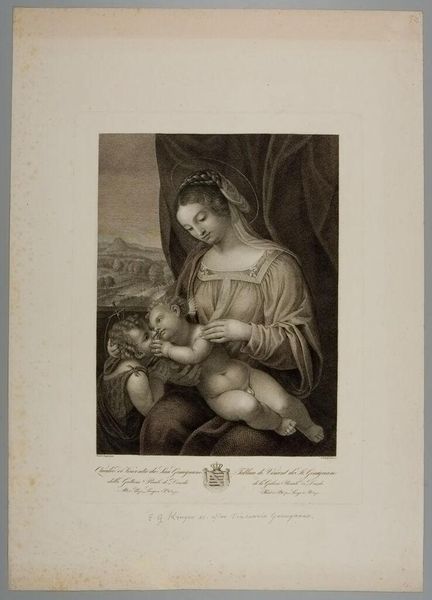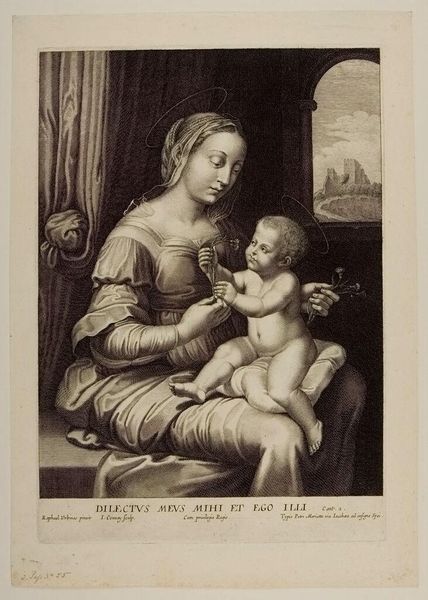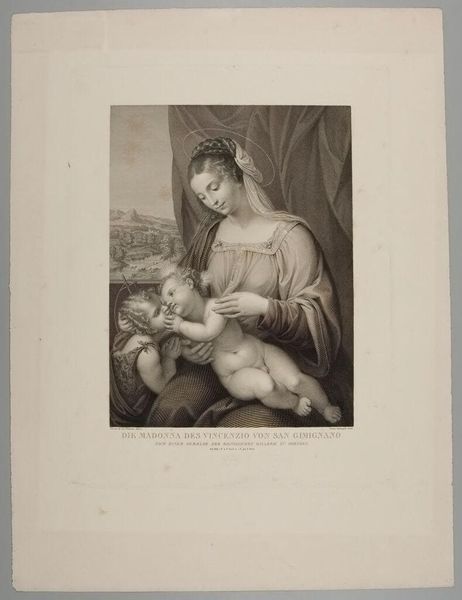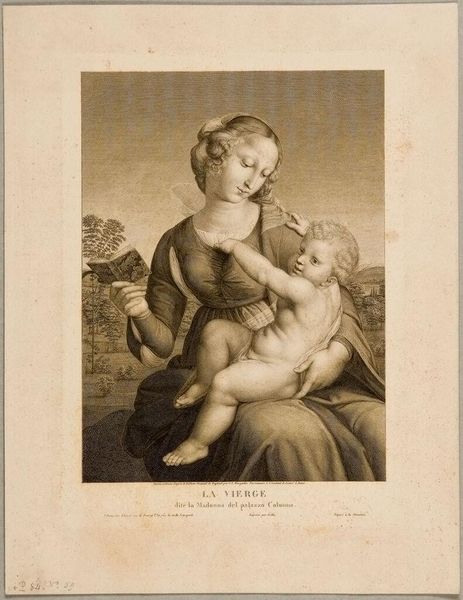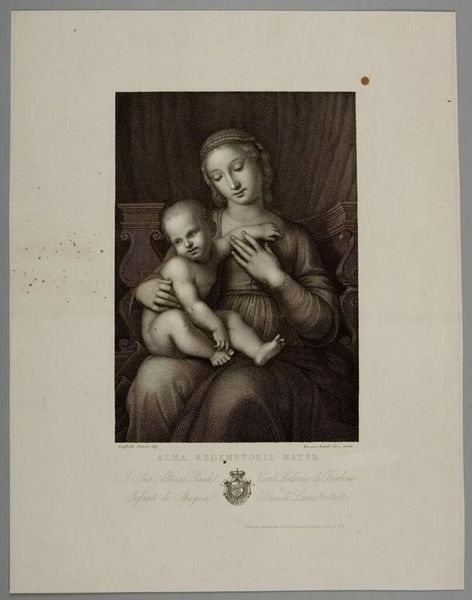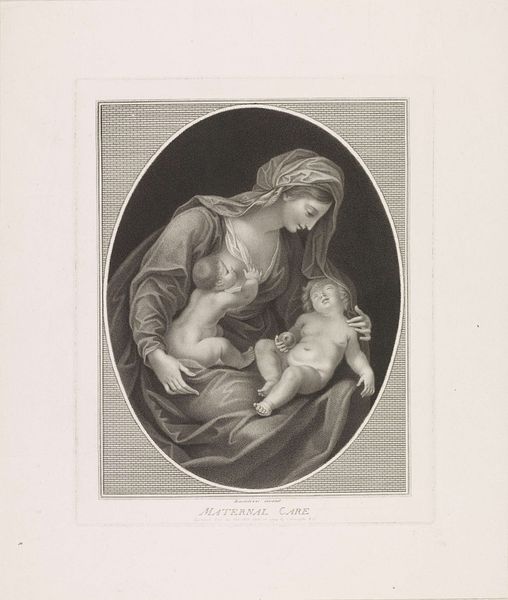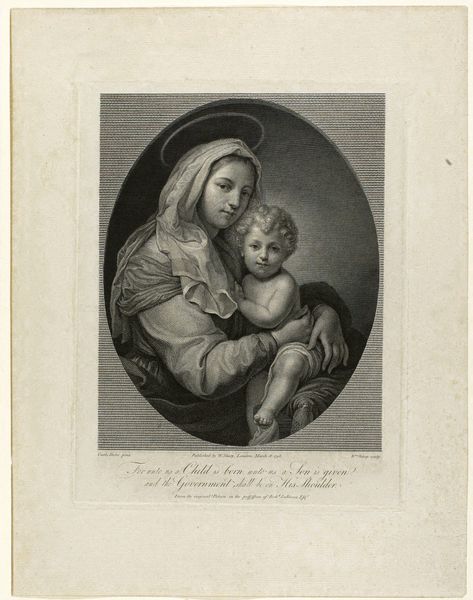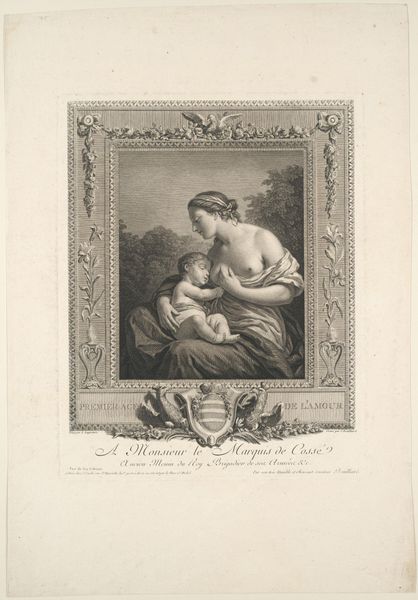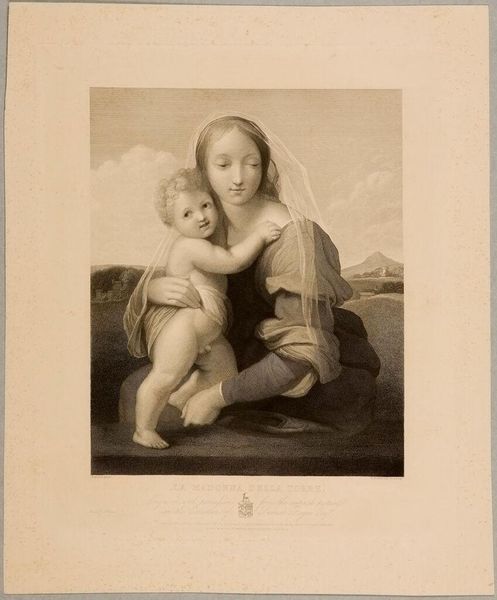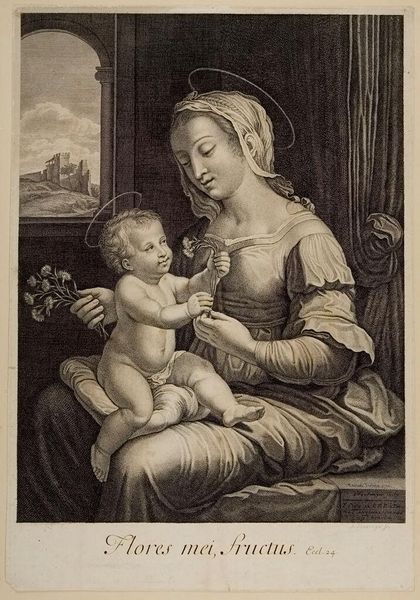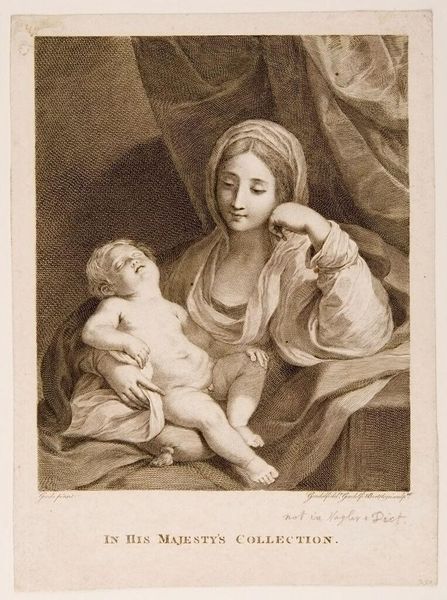
Madonna and Child known as "The Madonna of the Carnation" c. 19th century
0:00
0:00
Copyright: CC0 1.0
Editor: This is Gioachimo Lepri's "Madonna and Child," also known as "The Madonna of the Carnation," housed here at the Harvard Art Museums. It’s interesting how the figures seem both idealized and somehow melancholic. What do you see in this piece, particularly in terms of its historical context? Curator: The Madonna’s gaze, directed away, speaks volumes. This reflects a culturally imposed burden of purity and motherhood, denying her individual agency. The carnation itself becomes a symbol ripe for feminist analysis – is it a gift, or an expectation? Editor: That's fascinating. I hadn't considered the power dynamics embedded in such a seemingly gentle image. Curator: Exactly! The composition, while traditional, becomes a site of contestation when viewed through a critical lens. It’s a reminder that even religious iconography reflects societal norms and inequalities. Editor: I see that, thanks! I learned a lot. Curator: Likewise! The beauty of art lies in its ability to spark such dialogues.
Comments
No comments
Be the first to comment and join the conversation on the ultimate creative platform.
